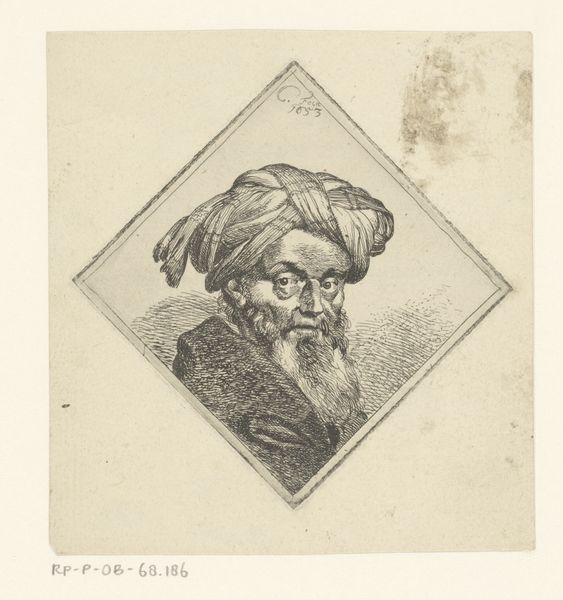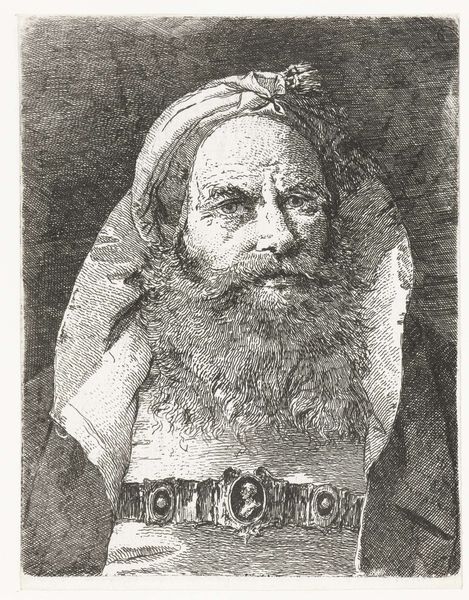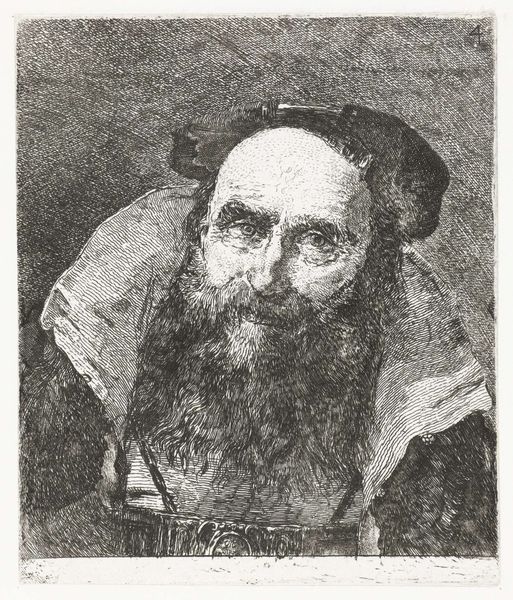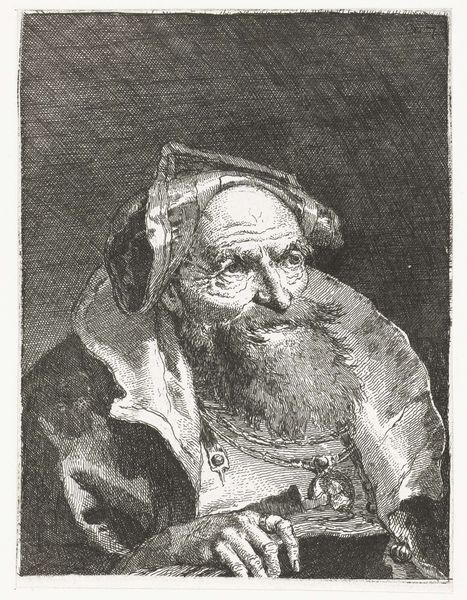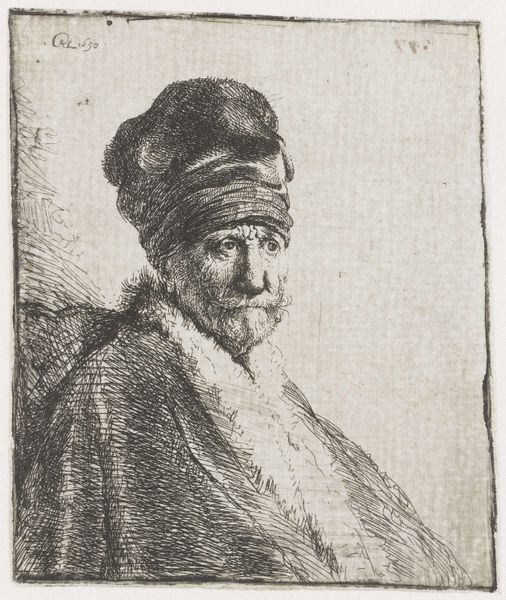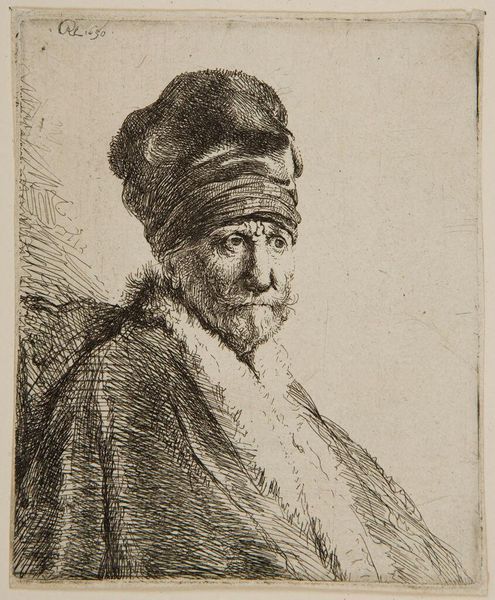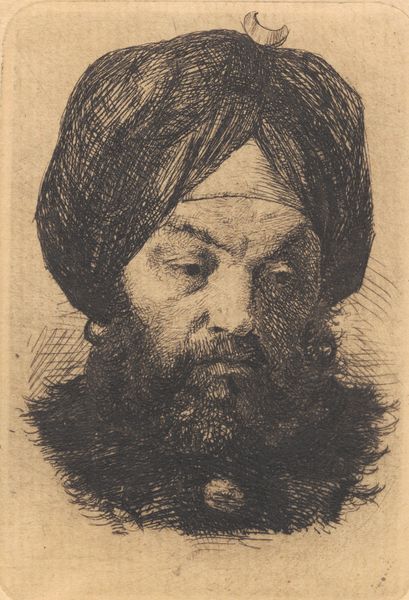
Dimensions: height 141 mm, width 108 mm
Copyright: Rijks Museum: Open Domain
Curator: Before us we have Giovanni Domenico Tiepolo's etching, "Old Man with a Turban," dating from 1757 to 1774. The use of line is just spectacular! Editor: Stark. Striking! The density of the hatching gives it a certain... gravitas. It evokes a certain world-weariness, wouldn't you say? Curator: Absolutely. Note how the intricate lines delineate not only form but also texture. The turban itself becomes a focal point, its folds echoing the lines of the man's aged face. Consider how it subtly highlights the play of light and shadow, thereby constructing a sense of depth. Editor: Right, but that turban! It's less an authentic garment and more a costume, almost theatrical. It reminds me of the period’s orientalist fantasies and how European artists would exoticize their subjects—whether intentionally or not. What kind of social context do you suppose led to such imagery? Curator: It's an interesting question, though my concern remains mostly in the manipulation of the medium. Look how Tiepolo creates form and mass through such incredibly controlled bites and scratches. In particular, observe how he coaxes out this palpable likeness, primarily via the controlled density of his marks and lines. Editor: Fair enough, but technique and effect cannot be divorced from their time, surely! In many ways, the piece presents us not only with a portrait, but also with questions about the West's construction of the "Other" during the height of empire. Curator: It's an image mired in the details of light and shade. Look past the apparent subject matter to behold this virtuoso demonstration in the sheer technicality of expression and you will grasp the appeal and beauty. Editor: Yes, and, perhaps more so if one allows for the implications of its politics to linger, making one reconsider even these technical components in new lights. Curator: Indeed, the layers of complexity that great artworks afford and open to audiences through various interpretative lens’. Editor: An interplay of gazes, no less; it challenges us to reassess not only the image before us, but the world, then and now.
Comments
No comments
Be the first to comment and join the conversation on the ultimate creative platform.



